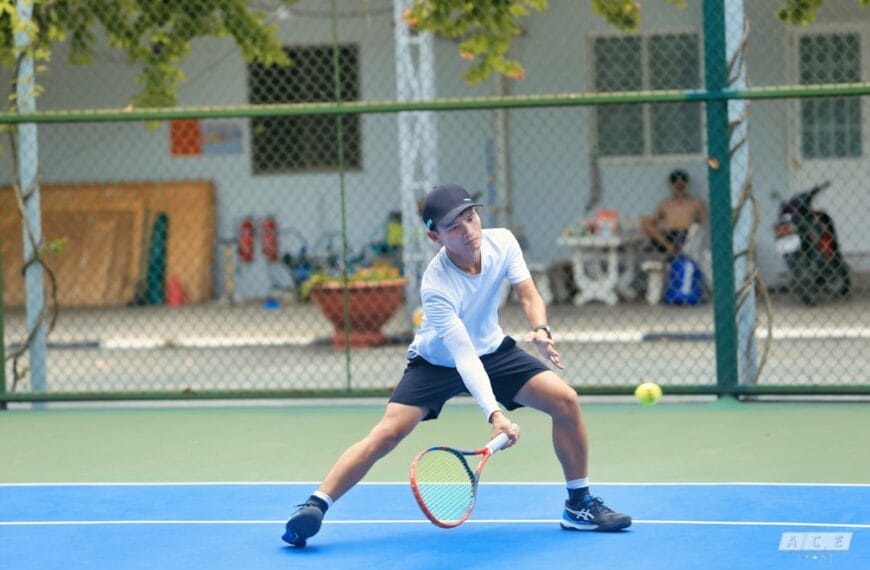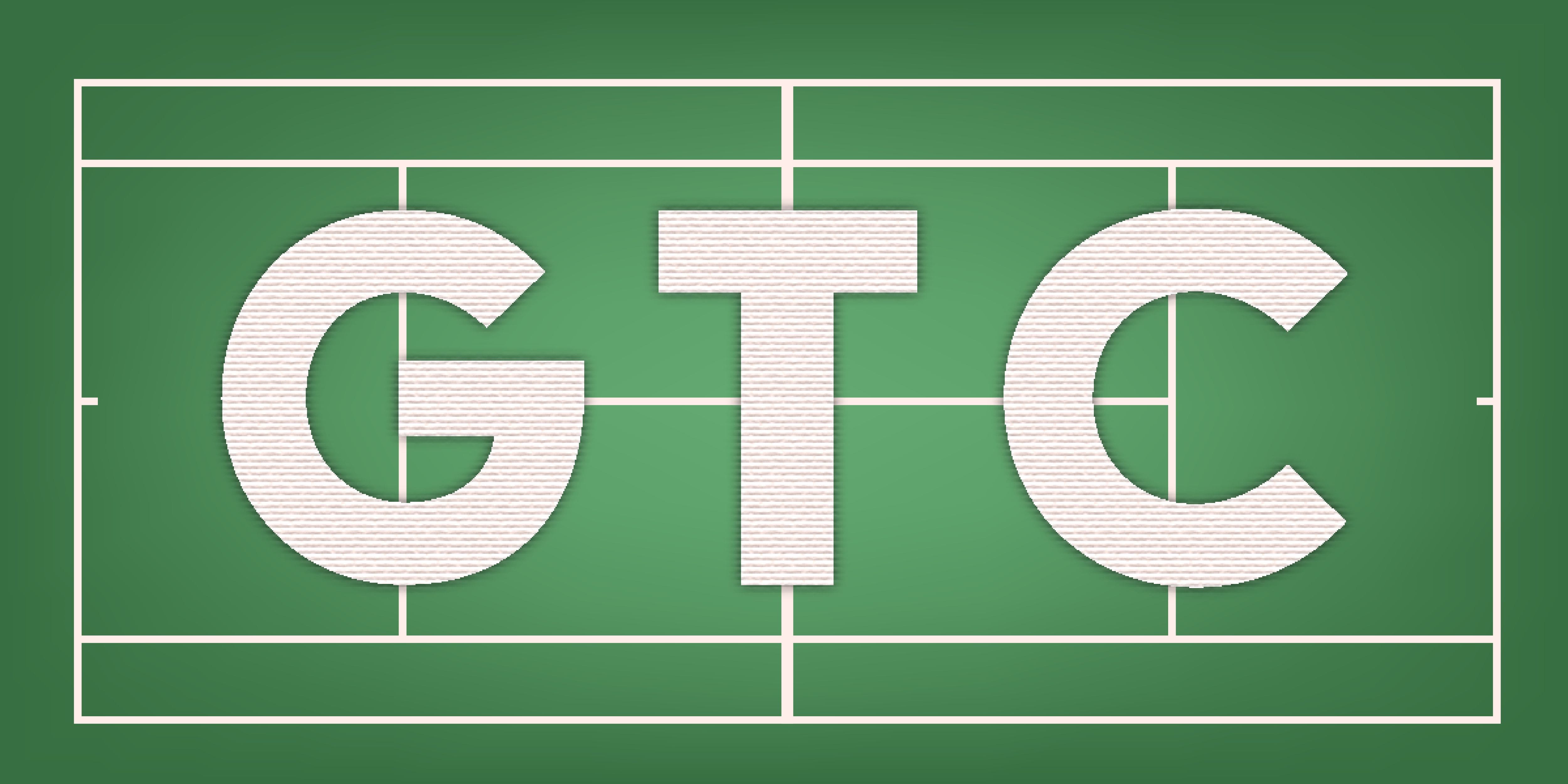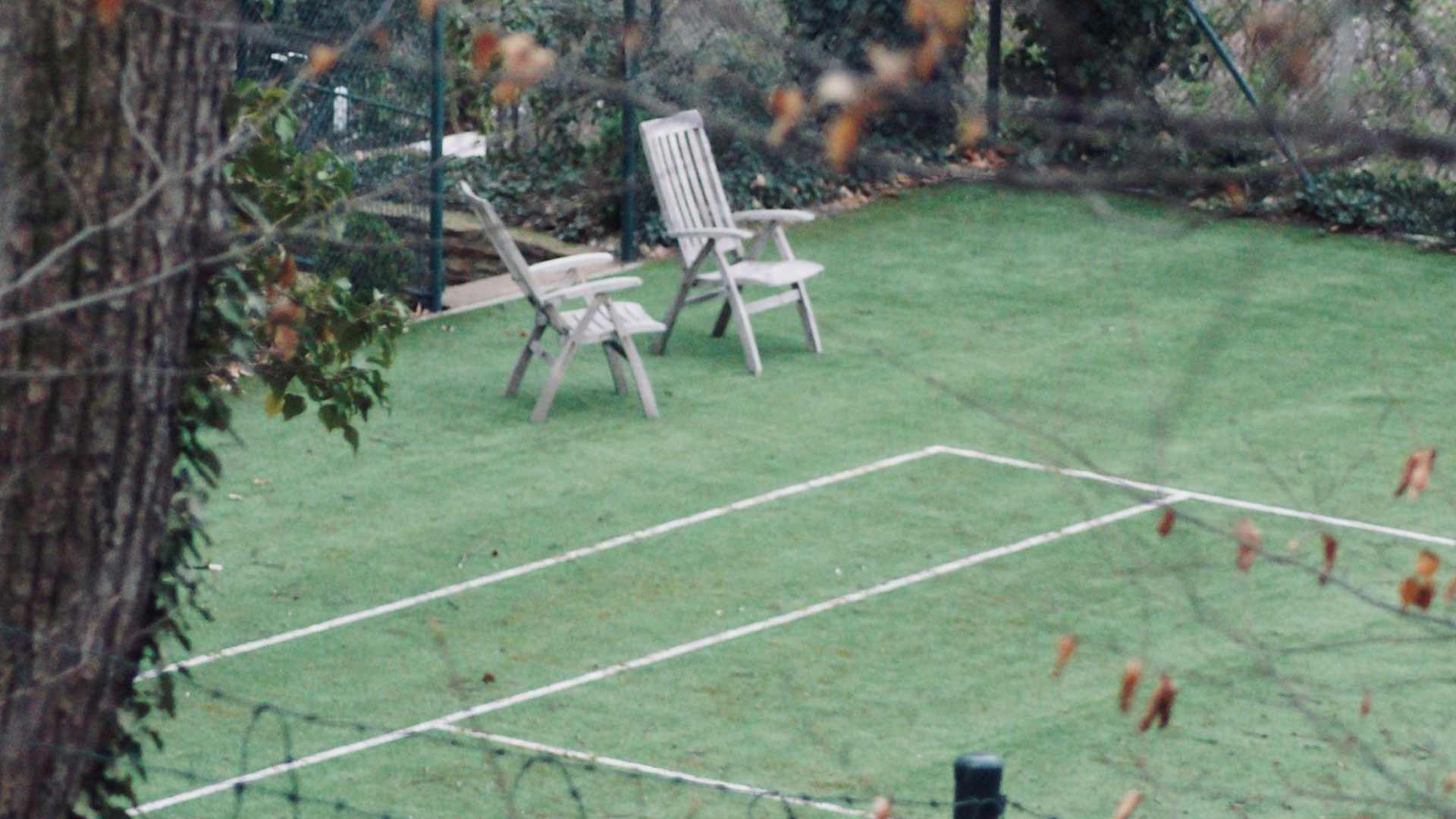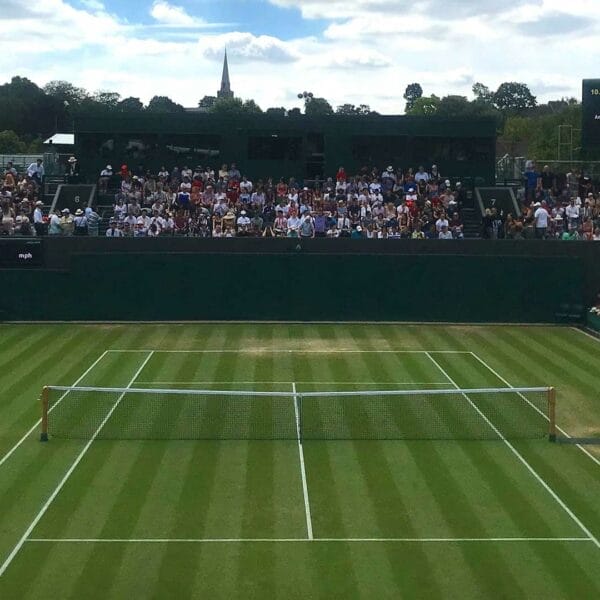Tennis is a game of precision, power, and timing. Yet, many players, especially adults seeking to improve their forehand or backhand, often overlook a fundamental aspect that underpins every great stroke: balance. Discover how balance and stability are crucial for controlling your shots, achieving consistency, and unleashing power on the court. This tutorial draws from years of coaching experience and is inspired by lessons learned at the beautiful Benc Sport Tennis Club in Ljubljana, Slovenia.
Before diving into exercises and corrections, let’s understand the core issue that balance helps solve: controlling the ball. If you’ve ever wondered why you sometimes hit the ball wide or into the net despite aiming carefully, the answer often lies in your body’s stability rather than your racket alone (Photo by Jon Matthews on Unsplash).
.
Table of Contents
- Step 1: Understand Why Balance Is Crucial in Tennis
- Step 2: Differentiate Between Static and Dynamic Balance
- Step 3: Recognise the Disadvantages of Poor Balance
- Step 4: Identify Why You’re Losing Balance
- Step 5: How to Improve Your Balance and Stability
- Frequently Asked Questions (FAQ)
- Conclusion: Make Balance Your Priority #1
Step 1: Understand Why Balance Is Crucial in Tennis
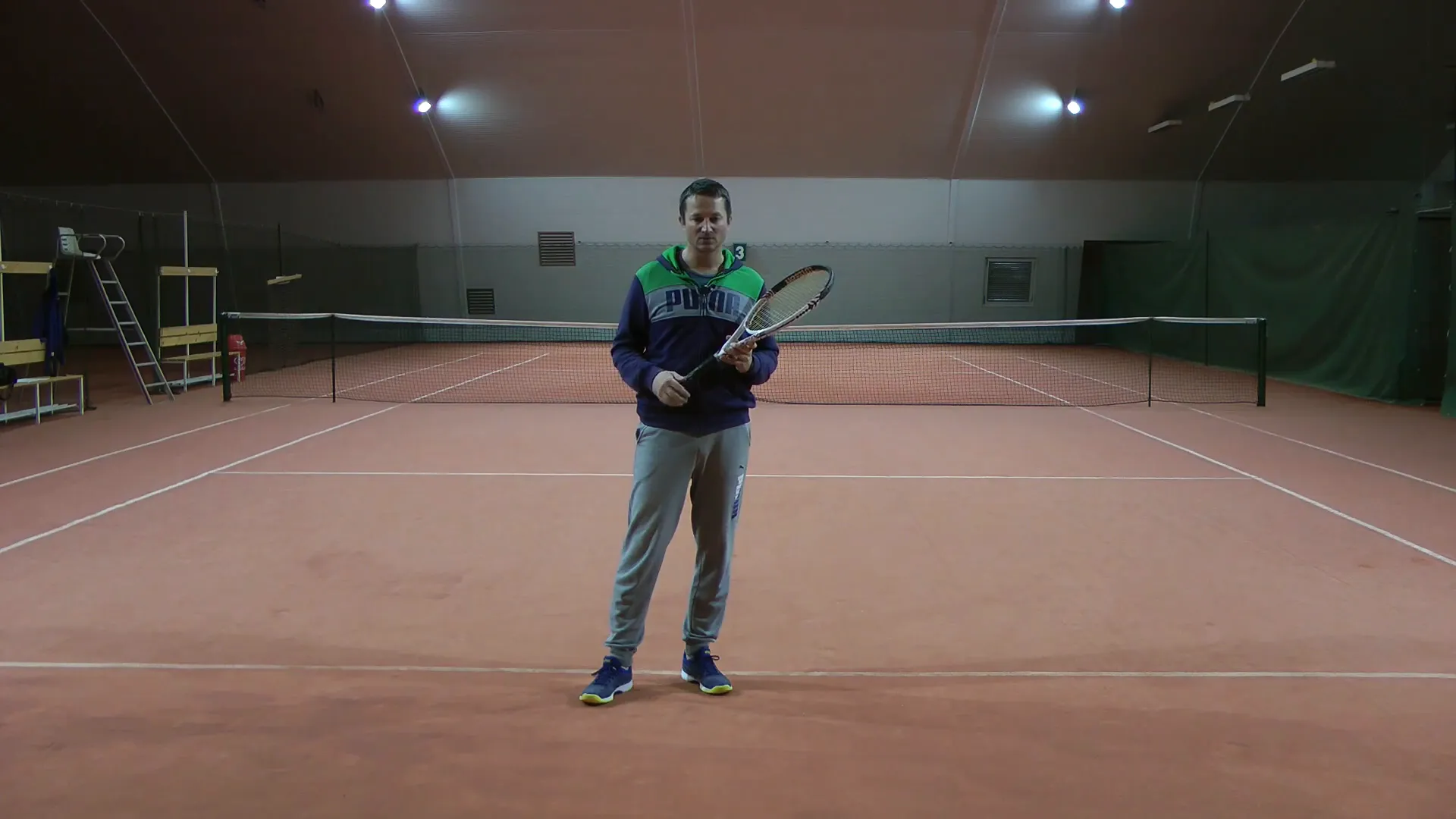
When players come to me with stroke problems, 90% of the time, the first correction I make is related to their balance. This is because tennis fundamentally revolves around controlling a moving ball while your body is in motion. You want your shots to land inside the court, clear the net, and stay within the sidelines and baseline. Achieving this consistently requires a stable base.
Players often instinctively try to solve ball control problems by stiffening their wrists. When the racket moves quickly and changes angles, the ball can spray unpredictably—sometimes long, sometimes short, sometimes wide. The natural reaction is to tighten the wrist muscles to stabilise the racket head. However, this approach overlooks the broader context: your body’s position and balance.
Trying to stabilise the racket without controlling your body leads to uncomfortable positions and ineffective strokes. You might find yourself reaching too far or twisting awkwardly, which only worsens control. Instead, skilled players know that controlling the body in movement directly translates to better racket control and ball placement.
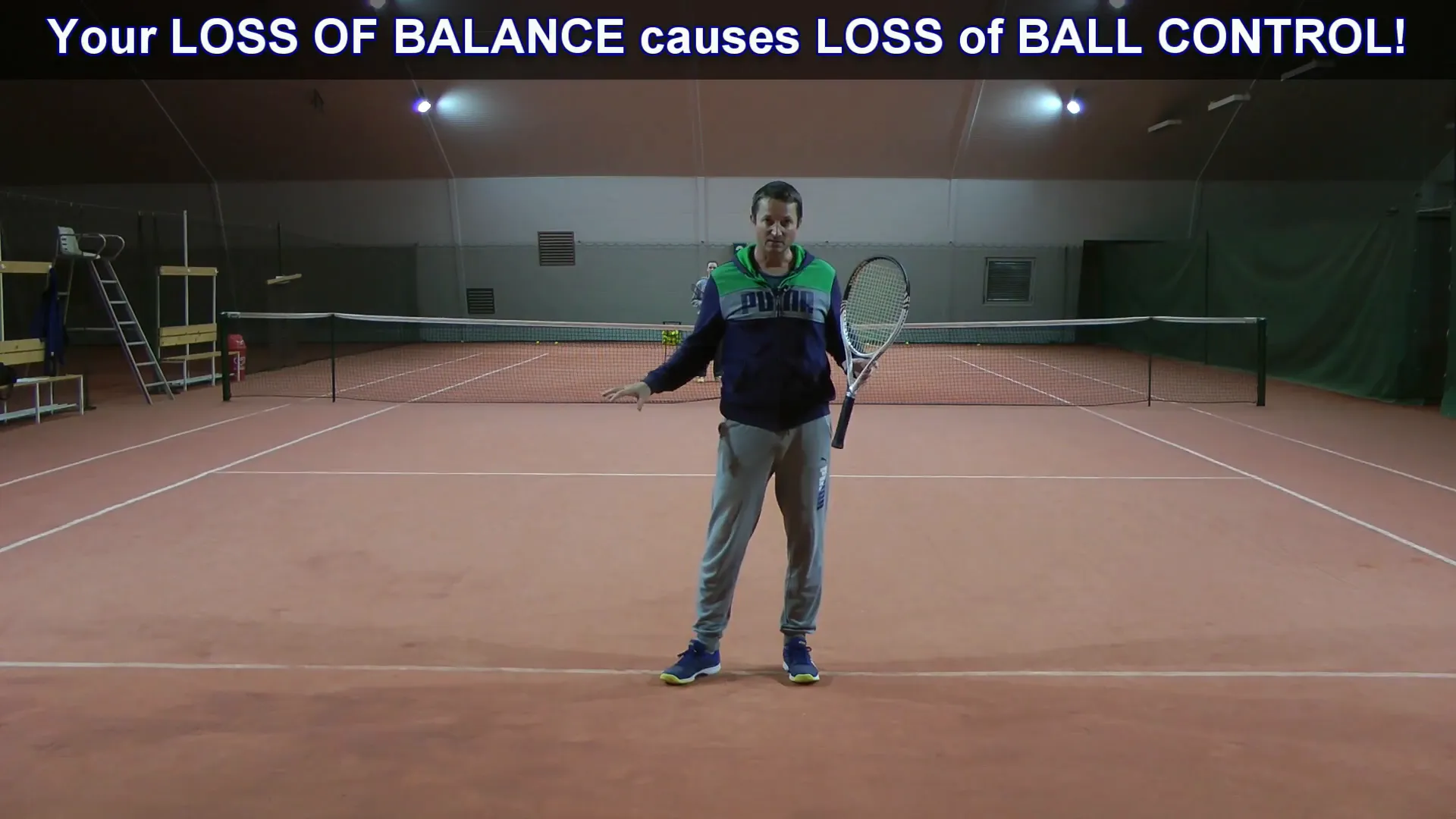
Step 2: Differentiate Between Static and Dynamic Balance
Balance in tennis is rarely about standing perfectly still. Unlike static balance, where you might stand upright without movement, tennis requires dynamic balance—maintaining control of your body while moving and executing strokes. This means you can move forward, backwards, or sideways, but still maintain a stable core and solid footing.
When you control your body well in dynamic situations, your racket face remains steady, and your shots become more consistent and powerful. This dynamic stability allows you to harness your body’s momentum, channelling energy into the ball rather than fighting to stay upright.
Step 3: Recognise the Disadvantages of Poor Balance
Imagine you are trying to shoot a target while standing on a rocking boat. The rifle is perfect, but your unstable base makes hitting the target nearly impossible. This analogy perfectly describes what happens when you hit a tennis ball off-balance. The fault isn’t your forehand or backhand—it’s the shaky foundation beneath you.
Poor balance causes several problems:
- Loss of Rotation: When off balance, your brain instinctively limits rotation to prevent falling. This means you end up hitting with your arm alone, rather than your whole body, which reduces power and control.
- Tension and Tightness: As soon as you lose balance, muscles tense up to try to regain stability. This tension travels from your legs up through your body, making your strokes rigid and less fluid.
- Moment of Panic: Losing balance triggers a subconscious panic response, especially at the moment of contact with the ball. This rush leads to rushed swings and poor ball control.
- Reduced Power and Consistency: Without a stable base, your shots lose both power and repeatability, making it harder to execute your game plan.
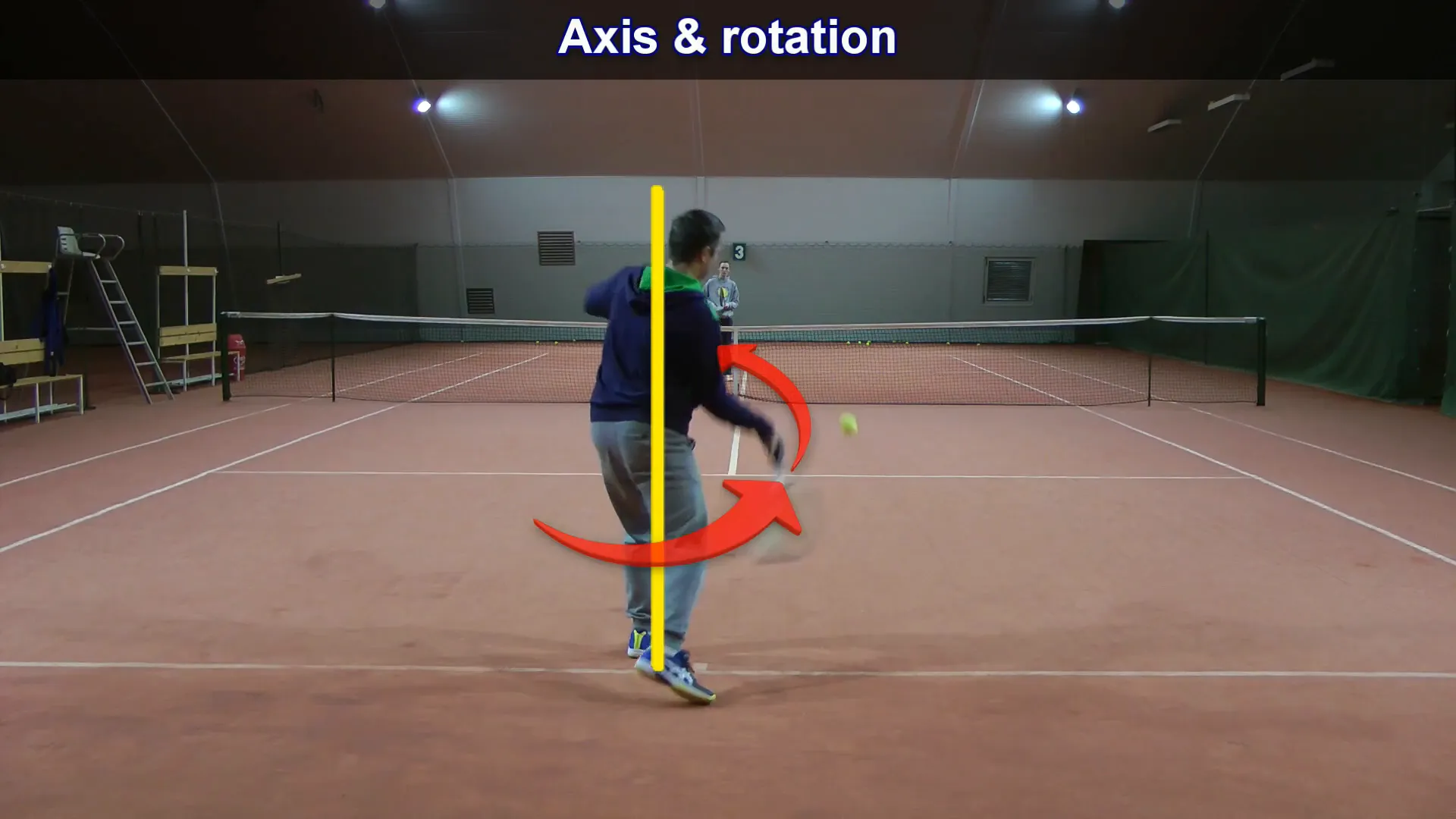
Step 4: Identify Why You’re Losing Balance
Understanding why you lose balance is the first step toward fixing it. Common reasons include:
Playing Points Too Early Without Proper Preparation
Many players jump into match play or points before mastering the importance of balance. This leads to rushing around the court, hacking at balls, and reaching awkwardly. These habits become ingrained, making it harder to break the cycle later.
In doubles, this is especially common as the pace quickens and reaction time shortens. Players feel pressured to get the ball back quickly, sacrificing stability for speed.
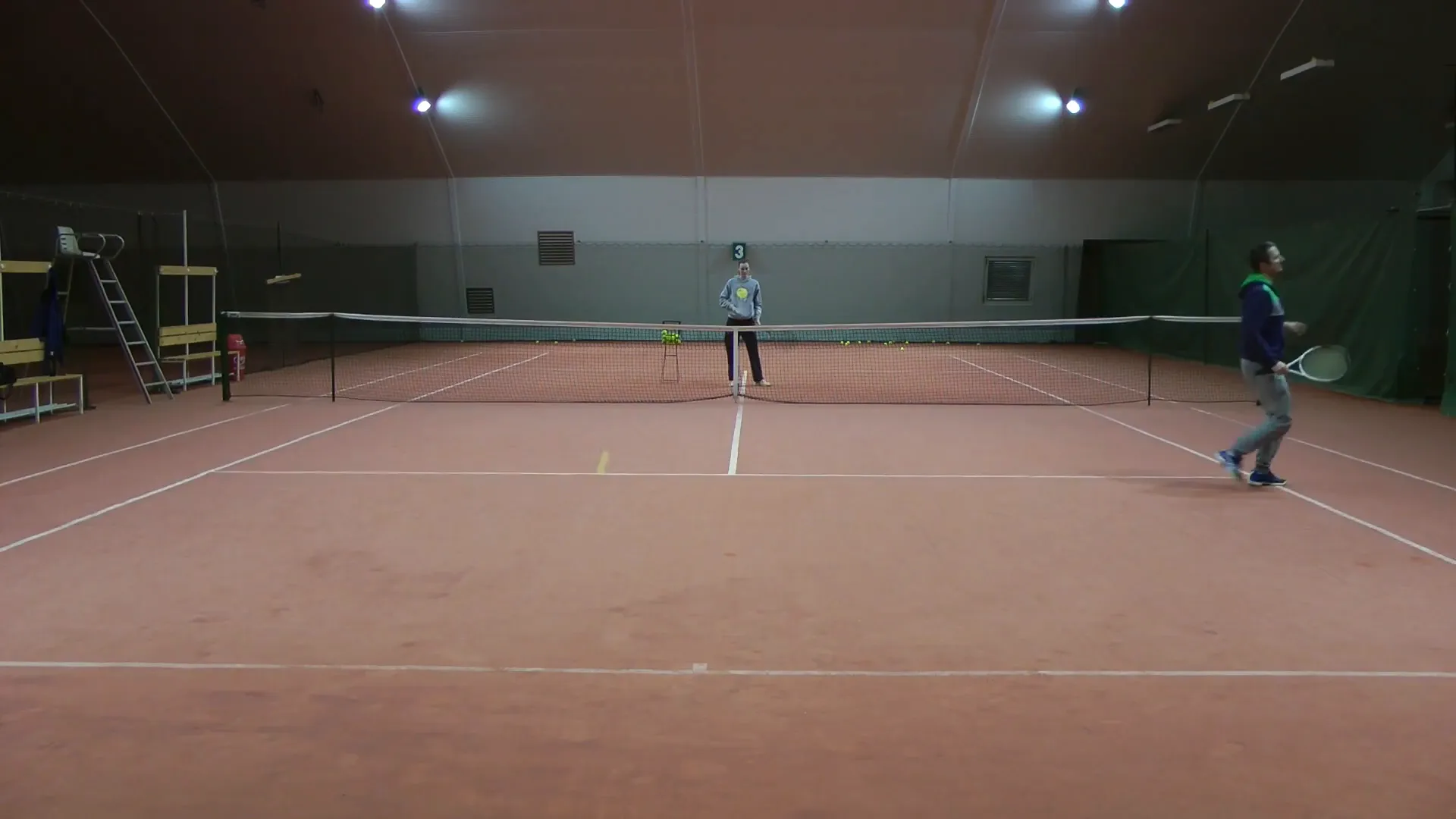
Narrow Base with Feet Too Close Together
A narrow stance reduces your base of support, making it difficult to maintain balance during swings and rotations. When your feet are too close, the natural forces generated by your strokes can easily throw you off.
For open-stance forehands, a simple guideline is to keep your feet wide enough to fit one racket between them. This may seem very broad at first, but observing professional players will reinforce how essential this positioning is.
Poor Ball Judgment Leading to Mispositioning
Beginners often misjudge the ball’s trajectory and arrive too close or too far, making it impossible to set up a stable stance. Overrunning balls results in reaching or stretching, which compromises balance.
Improving ball judgment takes time—months or even years of practice. Meanwhile, encouraging a wide stance when possible helps mitigate the negative effects.
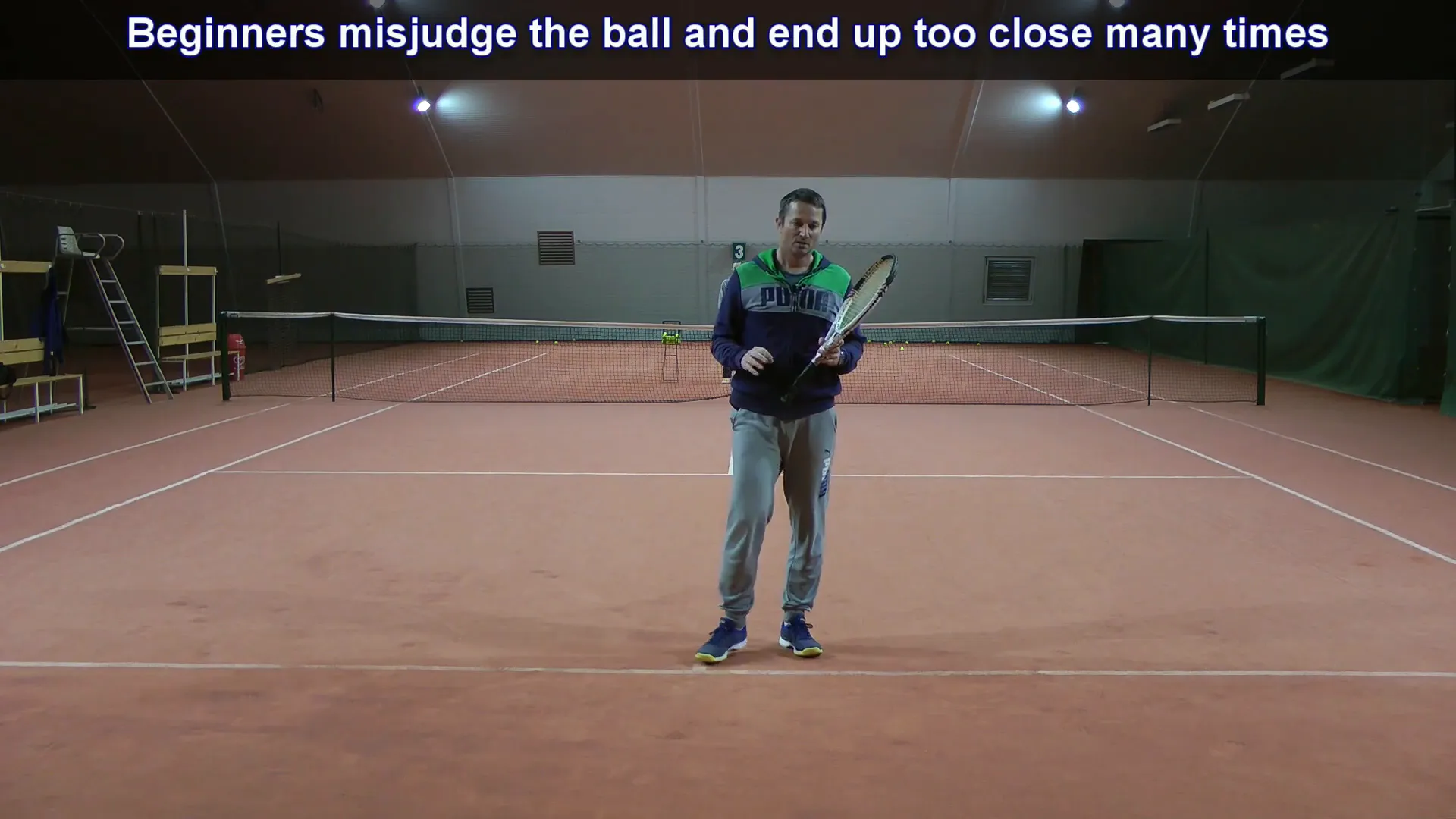
Playing Too Upright
Many players stand too upright when hitting, especially in open stance positions. While you can sometimes get away with this on short balls when leaning slightly forward, it becomes problematic on deeper or higher balls.
Physics tells us that when you swing forward with an upright posture, your body experiences a backwards force that pulls you off balance. This backwards pull, combined with gravity, makes it difficult to maintain stability and control.
The correction is to adopt an athletic posture with your back at a slight angle, leaning forward. This forward posture allows your upper body weight to counterbalance the forces generated during the swing, keeping you stable.
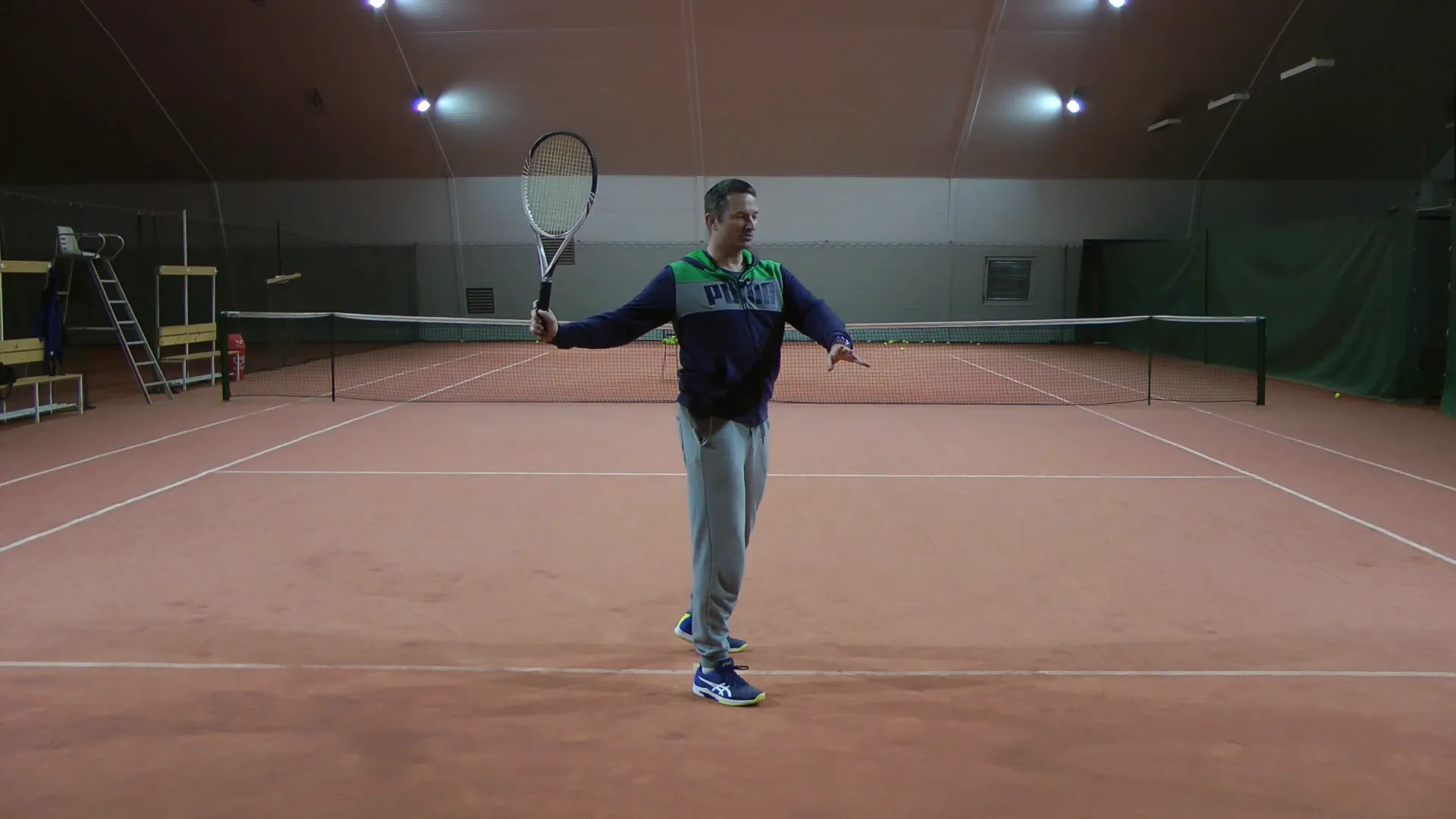
Moving Backwards with Poor Posture
Players often lose balance moving backwards because they lean backwards instead of maintaining a forward posture. This is contrary to other sports, such as basketball or soccer, where athletes maintain a slight forward lean even when retreating.
Maintaining a forward posture while moving backwards in tennis allows you to stay balanced and ready to hit quality shots.
Laziness or Energy Conservation
Some players instinctively reach for the ball rather than moving efficiently to position themselves properly. This instinct to conserve energy by minimising footwork sacrifices stability and shot quality.
Good footwork requires effort, but it pays dividends in shot control and consistency. Players need to feel the difference in their strokes when balanced versus reaching to appreciate the value of energy investment.
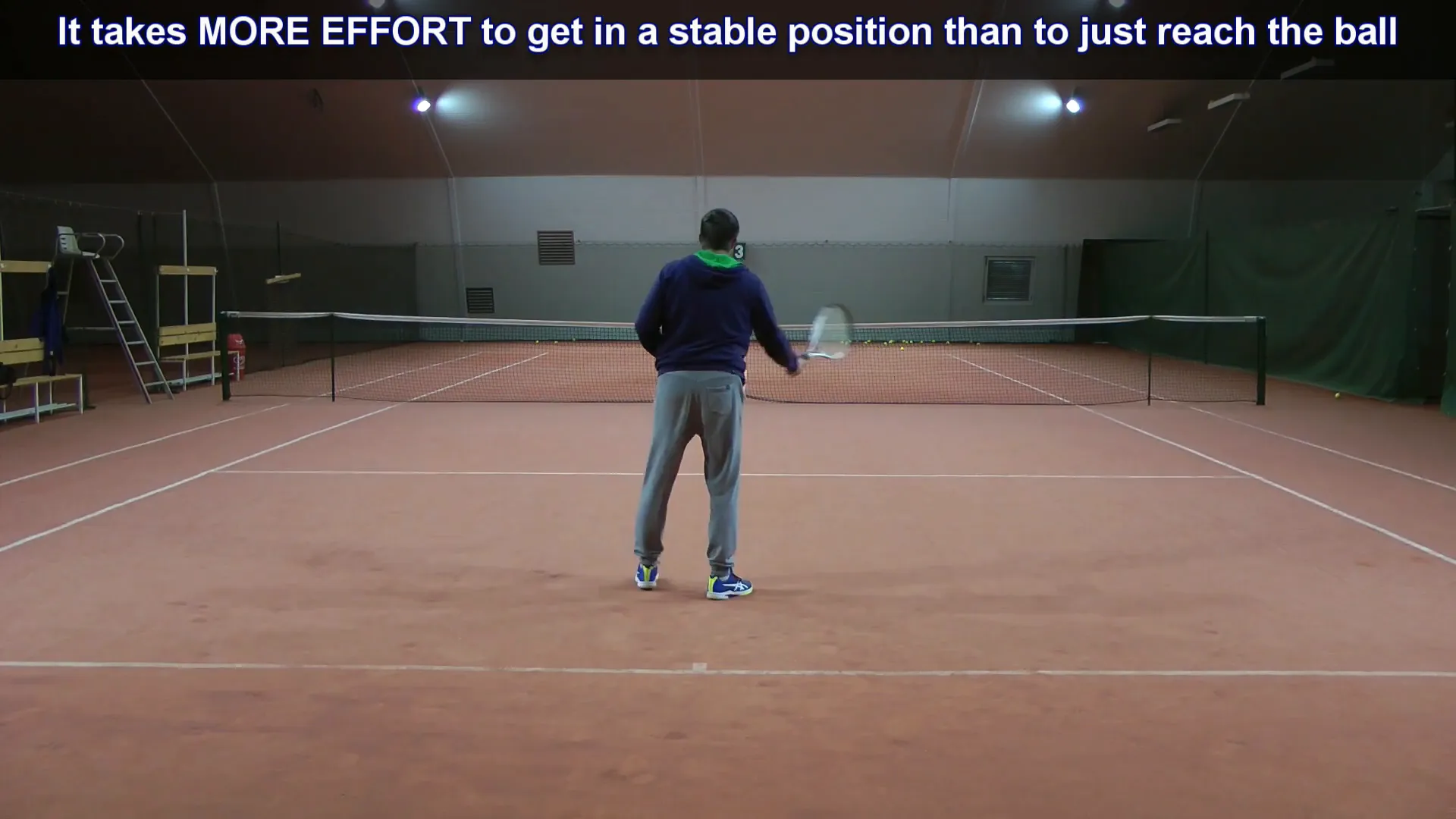
Poor Leg Strength
Your legs are the foundation for balance. Weak legs cannot effectively absorb momentum, stop side-to-side movement, or push off powerfully. In the open stance forehand, for instance, your leg must act like a spring—absorbing the side momentum, loading, and then pushing off while twisting your pelvis.
Without sufficient leg strength, you might stand stiffly or even fall off balance when trying to execute these movements.
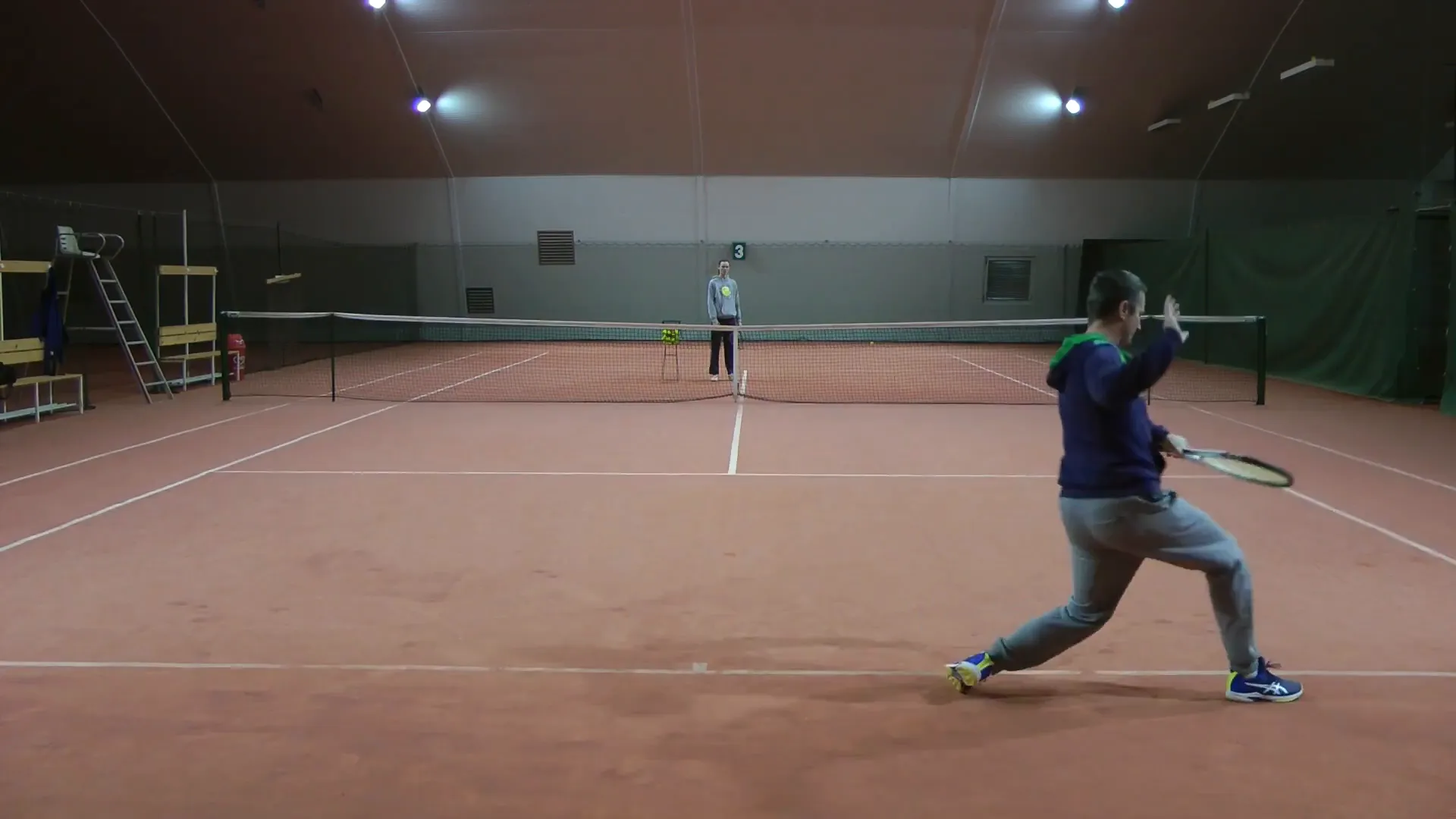
Step 5: How to Improve Your Balance and Stability
Now that you understand why balance is vital and what causes instability, it’s time to work on improving your stability on the court. Here are some practical tips and exercises:
- Focus on Footwork and Positioning: Develop the habit of moving your feet quickly and positioning yourself properly before hitting the ball. Aim for a wide stance, particularly in open stance shots, keeping one racket length between your feet.
- Adopt an Athletic Posture: Maintain a slight forward lean with your knees bent. Avoid standing upright, especially when preparing to hit balls from open stance positions.
- Practice Dynamic Balance Exercises: Work on drills that involve moving and stopping with control. Balance boards, lunges, and single-leg stands can help develop the necessary stability.
- Strengthen Your Legs: Incorporate leg-strengthening exercises, such as squats, deadlifts, and plyometrics, into your fitness routine. Strong legs provide the power and stability to absorb momentum and push off effectively.
- Improve Ball Judgment: Spend time practising ball tracking and footwork drills to better judge the ball’s trajectory and arrive in the optimal hitting position.
- Train Your Mindset: Understand that investing energy into good footwork and positioning leads to better shots and more wins. Prioritise quality strokes over conserving energy.
For more detailed exercises to improve leg strength and balance, I recommend consulting resources such as this comprehensive guide on tennis fitness.
Frequently Asked Questions (FAQ)
Q: How does balance affect my dominant eye in tennis?
A: Your dominant eye plays a crucial role in tracking the ball and aiming your shots. However, no matter how well your eye guides you, if your body isn’t balanced, your shots will lack control and power. Balance complements your visual skills by providing a stable platform for your strokes.
Q: Can I still hit good shots if I’m slightly off balance?
A: Occasionally, yes. But consistently hitting effective shots requires a stable base. Small losses of balance lead to tension, rushed swings, and decreased accuracy, which add up over time.
Q: What is the difference between static and dynamic balance in tennis?
Static balance is maintaining stability while standing still, whereas dynamic balance involves controlling your body while moving and executing strokes. Tennis requires dynamic balance due to the constant movement involved.
Q: How wide should my stance be for open-stance forehands?
A: A good rule of thumb is to keep your feet wide enough to fit one tennis racket between them. This provides a solid base for rotation and power generation.
Q: How can I improve my leg strength for better tennis balance?
Incorporate strength training exercises focusing on the legs, such as squats, lunges, and plyometric drills. Consult with a fitness coach if possible to create a tailored program that suits your level.
Conclusion: Make Balance Your Priority #1
Balance and stability are the unsung heroes of every great tennis stroke. Without a stable base, your racket control suffers, power diminishes, and consistency becomes elusive. By understanding the importance of dynamic balance, identifying common causes of instability, and committing to improving your footwork, posture, and leg strength, you create a foundation for success on the court.
Remember, tennis is not just about reaching the ball—it’s about positioning yourself to hit the best possible shot. Embrace the effort required to move well and stabilize your body, and you will see immediate improvements in your game.
So next time you practice or play, focus on controlling your body as much as your racket. Your dominant eye in tennis will guide you, but your balance will be your true game-changer.
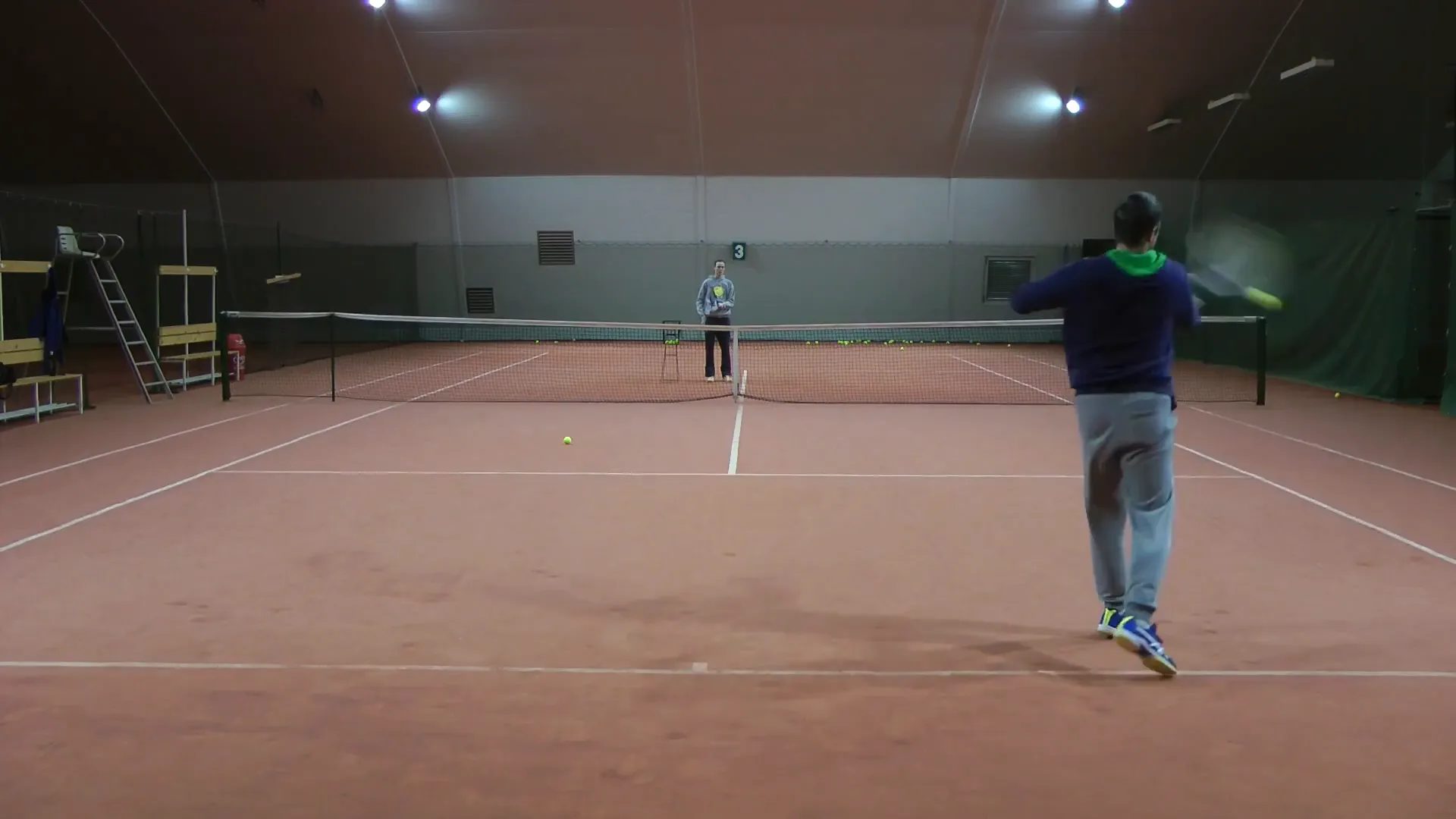
This article was created from the video Tennis Balance – Priority #1 In Stroke Correction (Part 1)



